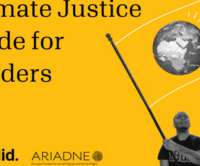Getting from “no” to “yes” for climate justice
Candid
JUNE 16, 2022
The reality that vulnerable communities who are often most impacted by the effects of climate change are also the communities least responsible for causing it makes the unfairness of this lack of support particularly glaring. . In essence it’s a tiny slice of a tiny slice. But it doesn’t have to be this way. Not reinventing the wheel.











Let's personalize your content